SDLC Agile Model-The Best Choice For Software Development
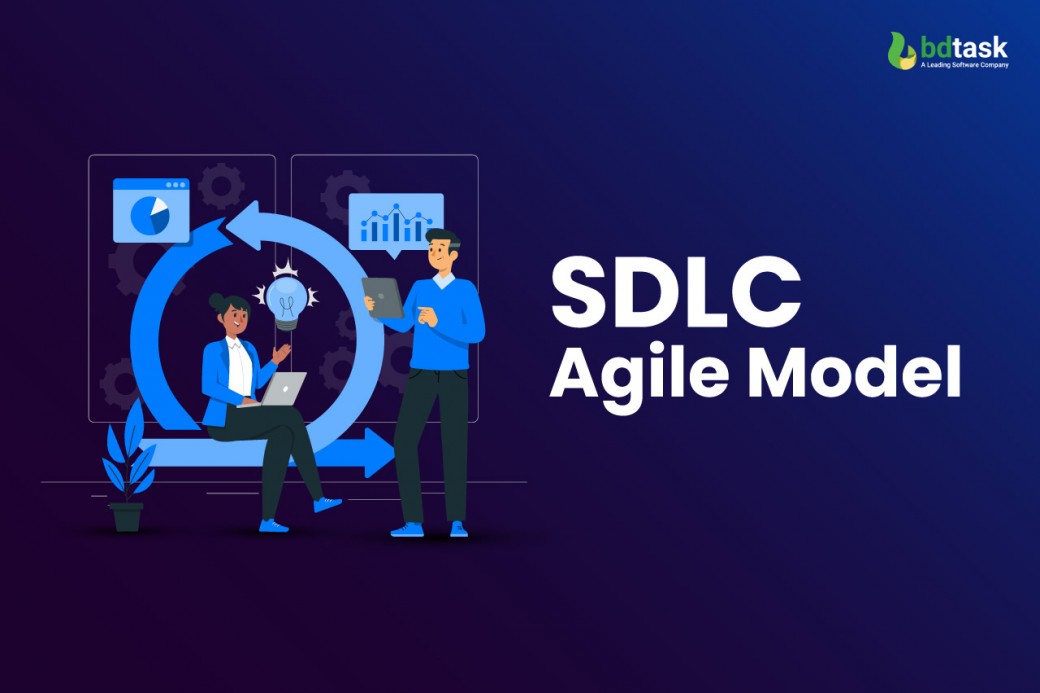
Before 2001, the waterfall model was the most adopted software development strategy. However, the major issue was its ineffectiveness for new or adaptive client requirements. So, to eliminate this issue, a group of genius people in the software industry developed the new SDLC method named Agile in 2001. Since the agile SDLC model was introduced, its popularity has surged due to its speed, flexibility and adaptability. It is one of the straightforward and systematic software development roadmaps developers use nowadays.
Most custom software development service companies follow the agile model in SDLC. According to most of the surveys, around 50% of small and big IT companies adopted the Agile model. Moreover, almost all of them claimed that the quality of software and the overall performance of the companies have increased to nearly double.
In this blog, I will cover the role of an agile model in SDLC, agile SDLC model phases and agile model advantages and disadvantages. So, after reading this blog, you will clearly understand whether the Agile model is suitable for your company or not.
What Is Agile Model In SDLC?- Workflow & Diagram
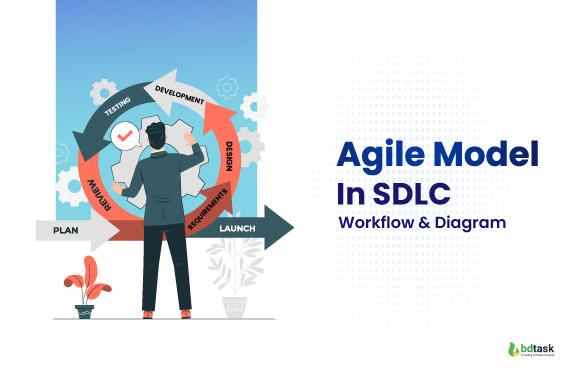
The agile software development life cycle is a software development project methodology that prioritizes adaptability, flexibility, rapid development, and transformation. The Agile model SDLC breaks all the old stereotype procedures followed to develop software.
Agile methodology in SDLC emphasizes developing functional software, preferring to keep a smooth personal communication with clients so that it's easier to adapt to any changes rather than blindly follow the blueprints. Professionals seeking to deepen their understanding of agile methodologies may benefit from resources such as microsoft az-204: practice test dumps, practice exams, and study materials. One of the biggest advantages of the Agile model is that software developers can give rapid output while cooperating with the clients and improvising wherever necessary.
The most beneficial feature of the SDLC agile model is that the software developer can achieve a quick product achievement. Developers will maintain agility by removing non-essential activities to ensure efficient project progression.
The agile model in SDLC follows a parallel and systemic phase to develop software:
- Planning
- Requirements Analysis
- Design
- Development
- Testing
- Deployment
Workflow & Diagram Of Agile SDLC Model Phases
The basic system of the agile SDLC model is that it will create multiple smaller iterations, which will help enhance the software's quality. Every iteration will follow 5 steps of the agile life cycle process. The software project will go through planning, requirement analysis, architecture setting, QA testing, and delivery iteration at every iteration.
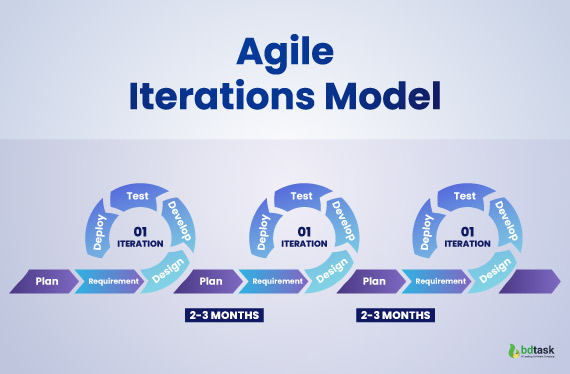
Figure: Agile SDLC Model
What Are The Five Stages Of The Agile Life Cycle?
As mentioned above, the agile model in SDLC is a methodology following which a software engineer develops a software project. The biggest advantage of the Agile model is that developers can make any changes required by the clients while constructing software. Below, I have described the five phases of the agile SDLC model:
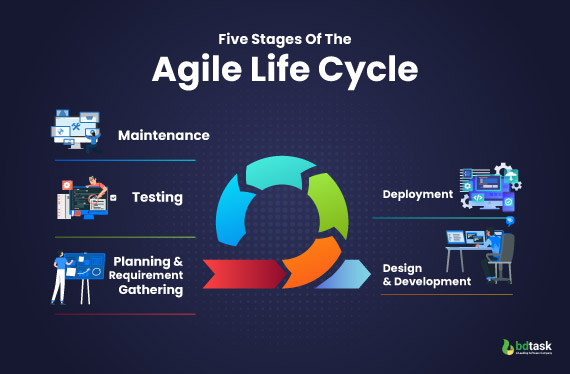
1. Planning & Requirement Gathering
Planning is the first step in every software development life cycle project. In this stage, developers communicate directly with clients, future users, and investors. In this Planning phase, software engineers will know the purpose, goal, and deadlines, understand the business/user requirements, identify which task to prioritize, and allocate the necessary resources.
2. Design and Development
In this second phase of the agile SDLC model, developers will start designing and developing the software project based on the requirements gathered in the planning phase. The developer will develop the first iteration, construct a UX/UI, fix an initial software architect and write coding.
3. Testing
The basic methodology of using an agile model in any software project is that it can adapt to any transformation or be flexible with the requirements.
Therefore, after a software engineer is done architecting the first iteration, the developer team will send it to the quality assurance or testing team. The testing team will test and ensure whether the code is clear or not, identify the errors and bugs, and perform a trial run to see the performance.
4. Deployment
Deployment is the last step in the SDLC process. Once the software project is done and ready to release in the market, the agile software developer will publish the software project on the premises server. After that, the project will be live and accessible to the user.
Before the SDLC agile model was invented, software developers used to apply the waterfall model in the software development process; as a result, software engineers had to face huge difficulties in improvising or updating after the client feedback. There are other SDLC models, too, such as V model, Spiral model, Iterative model, Prototype model and many more.
SDLC Agile model is essential for any complex software development. Web3, the new era of the internet, is very much relying on the Agile SDLC model. For any NFT projects, blockchain applications or Crypto project development, it is necessary to follow the Agile model. Otherwise, the developers may disrupt the working process.
Agile Model vs. Waterfall Model
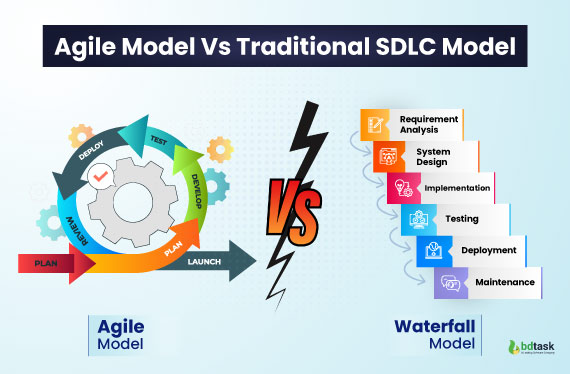
Agile Model
- Focus on speed and adaptability
- Full transparency between developer and client
- Shared responsibility between developer and clients
- Continuous planning, research and testing
- focus on the Iteration process
- Ongoing collaboration
Waterfall Model
- Carefully plan the first phase
- Limited transparency between developer and client
- Full control of a developer
- Required initial planning and research
- Focus on product delivery
- Every stage follows different terms
Agile Model SDLC Advantages And Disadvantages
Of Course, the agile SDLC model has some serious advantages and disadvantages. Recently, the agile mode has been the most chosen SDLC model by everyone, but unfortunately, the agile model isn't suitable for all types of software projects.
Advantages of Agile SDLC Model:
-
Flexibility: Agile methodology allows any type of transformation the client demands at any development process.
-
Customer Collaboration: Regular interactions with customers and stakeholders help to ensure that the product meets their expectations and aligns with business needs.
-
Faster Delivery: Agile emphasizes delivering working software in short iterations, resulting in quicker deployment of functional features.
-
Continuous Improvement: Iterative development cycles allow teams to incorporate feedback and make improvements consistently, enhancing the quality of the final product.
-
Transparency: The development process is visible to all team members, promoting better communication, accountability, and alignment.
-
Risk Mitigation: Early and frequent testing and validation help identify issues sooner, reducing project risks and enabling timely adjustments.
-
Prioritized Features: Features are developed and delivered based on their priority and value to the end-users, ensuring the most important aspects are addressed first.
-
Adaptable to Changes: Agile accommodates changes in requirements, technology, and market conditions, making it suitable for dynamic environments.
-
Higher Customer Satisfaction: Regular demonstrations and involvement of customers lead to increased satisfaction as their needs are addressed in each iteration.
-
Collaborative Environment: Agile fosters teamwork and collaboration among cross-functional teams, promoting a collective ownership mindset.
Disadvantages of the SDLC Agile Model:
-
Uncertain Deadlines: The flexible nature of Agile can make it challenging to predict project completion dates accurately.
-
Scope Creep: Continuous changes can lead to scope creep, where new features are added without clearly understanding their impact on the project timeline and goals.
-
Inadequate Documentation: Due to the focus on working software, documentation might be neglected, leading to potential knowledge gaps and difficulties in maintenance.
-
Dependency on Customer Availability: Agile requires active customer involvement, and delays in obtaining feedback or decisions can slow down the development process.
-
Complexity in Large Projects: Agile methodology software projects might face difficulties developing large and complex projects with multiple teams, potentially leading to coordination challenges.
-
Lack of Predictability: The adaptive nature of Agile can make it hard to predict the final product's exact features and functionalities.
-
Inconsistent Quality: Rapid development cycles might compromise thorough testing and quality assurance, leading to potential issues in the final product.
-
Resource Intensive: Agile demands frequent communication, collaboration, and involvement from team members, which could strain resources in certain contexts.
-
Resistance to Change: Traditional stakeholders and team members unfamiliar with Agile principles might resist shifting to this methodology.
-
Lack of Overall Design: Agile's focus on incremental development might lead to a lack of comprehensive design, impacting the overall system architecture.
Why Is It Beneficial To Choose An Agile SDLC Model?
SDLC Agile model is one of the most chosen software development models for every type of software project. And one of the biggest reasons is its flexibility and adaptability to changes at any stage or iteration. A survey done by state by agile and discover some essential and beneficial reasons to choose the agile SDLC model:
- 70 % of the respondents agreed that with an agile model, clients have the ability to manage priorities
- 65% of the respondents agreed that with the SDLC agile model, clients get full project visibility
- 65% of the respondents agreed that with an agile model in SDLC, a client can align with the business/IT
- 60% of the respondents agreed that the client gets on-time or fastest delivery with the agile SDLC model.
- 59% of the respondents agreed that using the agile SDLC model maintains a team mortality
- 58% of the respondents agreed that using agile increases team productivity
- 51% of the respondents agreed that using the SDLC agile model reduces project risk
- 50 % of the respondents agreed that using agile model developers and clients can have a project predictivity
- 46% of the respondents agreed that by using the agile model, they've got better software quality
- 44% of the respondents confirmed that agile model developers are very disciplined
- 41% of the respondents said that agile model developers have better-managing distribution
- 35 % of the respondents said that agile model developers have better software maintainability
- 26% of respondents agreed that agile model clients can save project costs.
6 Types Of Agile Framework
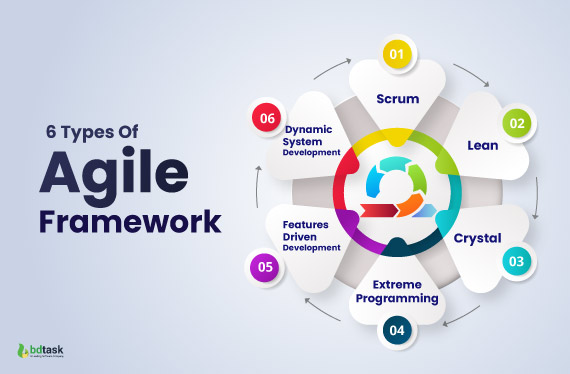
If you choose an agile software project model, the second step is to choose the framework based on your development team, workflow, scale, project complexity, requirements, targets, and needs.
- Scrum:
The Scrum framework in the agile model focuses on managing the task in team-based development. While using the scrum framework, all team members must strictly follow each sprint's work plan.
- Lean:
Lean framework in the agile SDLC model strictly follows the basic principle of "just in time production", increasing the speed of software development and reducing cost. Hence, with the Lean framework, it's certain that waste can be easily eliminated, developers have the scope to learn, early project delivery, and loyalty will be gained.
- Crystal
In the agile model, Crystal follows a straightforward and flexible approach to developing software projects. There are 3 types of crystal methodology such as clear, orange and orange web.
- Extreme Programming
Extreme programming is the most useful framework in agile models. This framework is especially applicable for projects requiring constant changes or not sure of system functionality.
- Features Driven Development
If you choose a features-driven development framework for your software project, your main focus will be designing and building features. Hence, for every iteration in the agile model, developers must complete each feature separately.
- Dynamic System Development
Selecting a dynamic system development framework in an agile model helps focus on rapid application software development, such as active users, and empowers teams to make quick decisions and deliver on time.
How Can Software Developers Effectively Use The Agile SDLC Model?
Here is the basic task list for the developers where the Agile model is adopted:
- Daily Meetings:
One of the basic policies of the agile model in SDLC is that developers have to maintain a daily meeting with the client to ensure whether developers are facing problems at any stage of the workflow.
- Live Demonstrations Of The Projects:
The developer will share the work progress of the SDLC agile project with the clients.
- Exchanging Feedbacks:
One of the biggest principles of the agile model is that clients will share their feedback about the project, analyze the progress, and negotiate with the software engineers.
- Sticking To Agile:
Implement all the alternations suggested by the clients and ensure each iteration shaped the software development process more smoothly.
Which Type Of Software Project Is Best Suitable For The Agile SDLC Model?
Before you start working with an agile model, you must determine which type of software project best suits the agile SDLC model. I have shared some common types of software projects to see if any match with your one.
- Possibility of frequent change in software project
- Low regulatory and requirement software projects
- Highly transparency between clients and developers
- Flexible in case of deadline and budget
Essential Key Point Of Agile Model In SDLC
- Face-to-face interaction between client and developer is the highest priority over following a strict SDLC process.
- Flexible, adaptive and self-organizing team
- Special focus on working on the software rather than following a documentation
- The main aim is to deliver customer satisfaction with rapid project delivery
- The Agile model supports any transformation, no matter the development progress phase.
- Client collaboration and involvement in the development progress is the highest priority
- Supports sustainable development pace
- A constant focus on technical excellence and sound design
- Client feedback gets the highest priority, and developers are bound to change it anytime.
Conclusion
Each SDLC model has its own benefits and limitations. After reading this article, I believe you now have enough knowledge to understand the SDLC agile model. As it promotes a collaborative, adaptable, and customer-centric approach to software development, you can use it in your adaptive software company.
Any successful SDLC implementation is not possible unless you understand the total strategy. So, be careful when implementing the SDLC Agile method in your software company. If you can adopt this method properly, you can deliver the best software to your clients.
Best of luck with your next software development using the Agile model.
Read More:
- How To Choose A Software Development Company - Simplified [2025]










